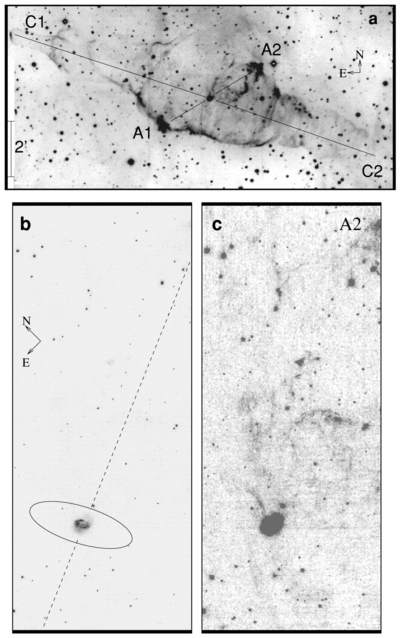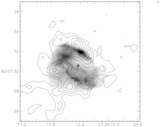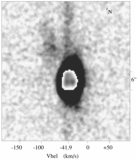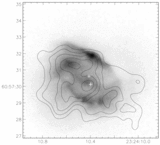Image Details

Caption: Fig. 1.
Panel a shows a deep Hα wide‐field, ground‐based image of the polypolar nebula KjPn 8. The symmetric knots C1‐C2 (P.A. 72°) and A1‐A2 (P.A. 126°) are located at the tips of independent bipolar outflows. The whole nebula is ﹩14^{\prime }\times 4^{\prime }﹩ in extent. Both bottom panels contain the same region covered by the WF2 + WF3 CCDs of the WFPC2 camera, shown at different gray scales to highlight different features. In panel b the ring structure and orientation of the compact nebular core with respect to the A2‐A1 bipolar outflows is appreciated; this is to be compared with panel c, where the filamentary structure leading to the A2 bow shock can be seen. The ellipse drawn around the core in panel b indicates the location and approximate dimensions of the massive CO disk found by Huggins et al. (1997). The spatial resolution of the image in panel c has been slightly degraded in order to enhance the nebular features. Note that the orientation of the bottom panels, indicated in panel b, differ from that of the top panel.
Copyright and Terms & Conditions
© 2000. The American Astronomical Society. All rights reserved. Printed in U.S.A.








